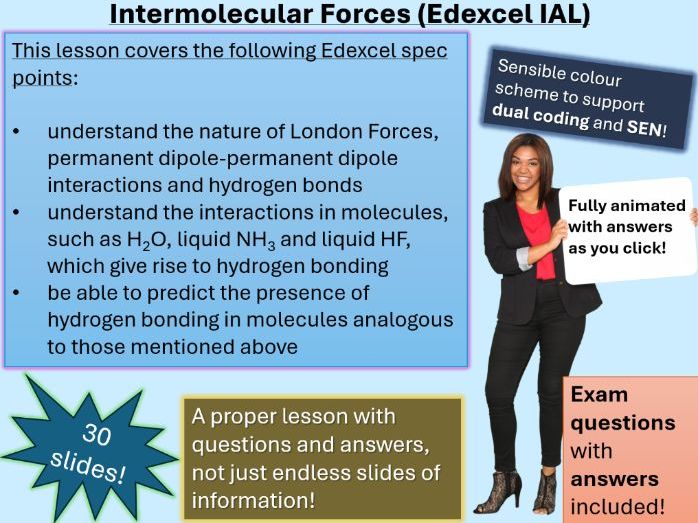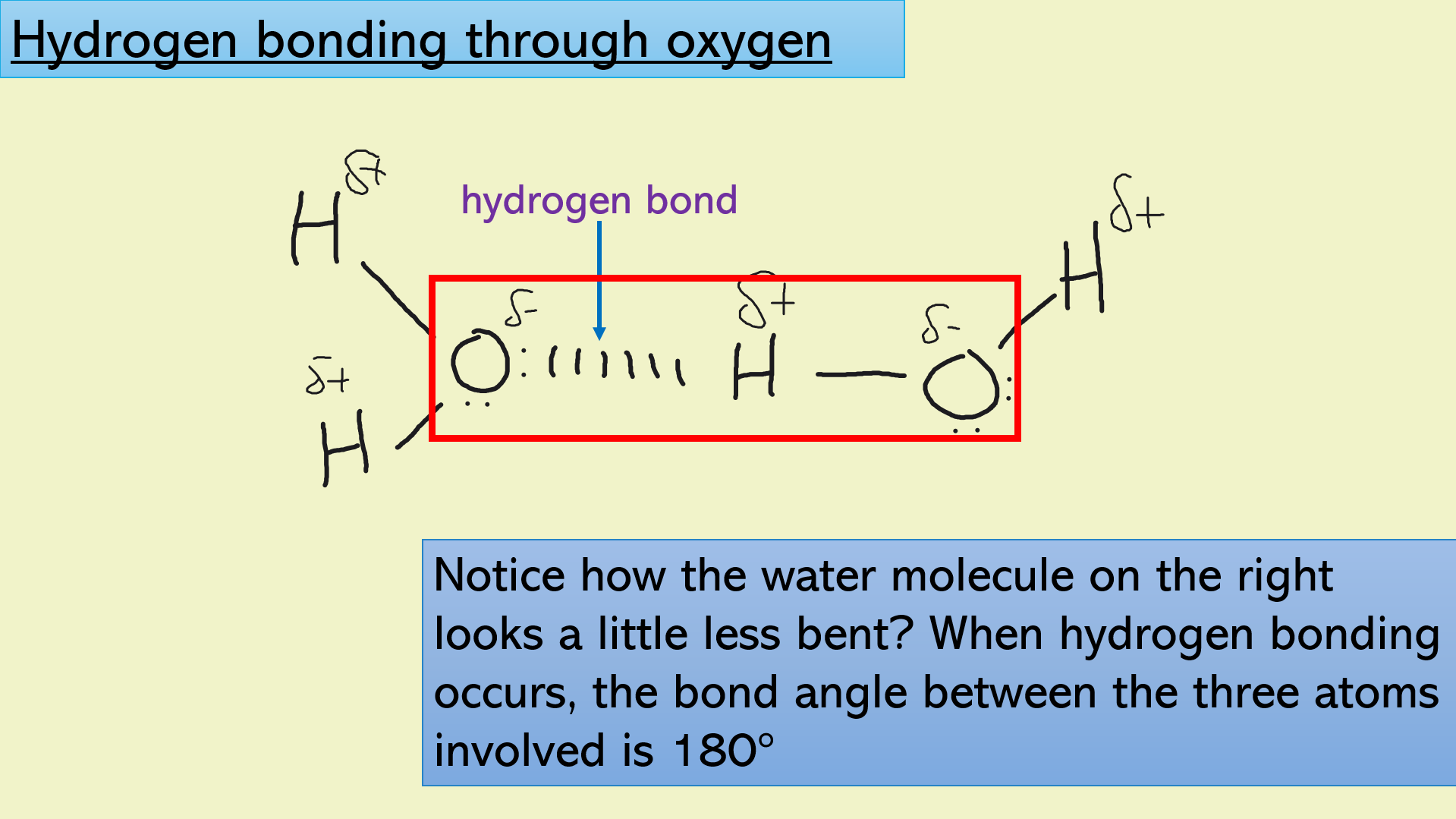


What is instantaneous dipole-induced dipole forces? What is permanent dipole-permanent dipole forces? What is a hydrogen bond? All this and more covered in this comprehensive lesson with questions and answers! This is a Year 12 A level lesson for Edexcel International Unit 2 – WCH12, but it can also be used for all UK exam boards. All the slides in this lesson are fully animated and include answers to every mini plenary question and exam question. The breakdown of the slides (which are best opened on Microsoft PowerPoint) is as follows:
Slide 1 - Title and 5-minute starter. The starter is a grid of four questions entitled ‘last week, last lesson, today’s learning and future learning’. Use this generic slide for all of your lessons by simply changing the questions and the answers each time.
Slide 2 - Lesson objectives (see thumbnail image)
Slide 3 – Hinge question: How can dipoles lead to forces of attraction between molecules?
Slide 4 – Explanation, through a diagram, of what a London force is
Slides 5 – 8: Word fill activity on London forces (print slides 6 – 7 for the students)
Slide 9 – Hinge question: Why does the boiling point of the noble gases increase as you go down the group?
Slide 10 - Explanation is given on this slide.
Slides 11 – 13: Permanent dipole-permanent dipole forces are covered in this section. Students will understand that is not always an attractive force, which is why it is not considered the most significant interaction
Slide 14 – Explanation of the term van der Waals forces
Slide 15 - learning pit-stop to check students’ learning. A series of questions of increasing difficulty, with the stretch and challenge (S+C) being the hardest. Answers animate onto the screen when you click
Slides 16 – 17: students presented with graphs showing boiling points of different hydrogen-containing compounds. There are clear, anomalous points, which are, in fact, due to hydrogen bonding
Slide 18 – conditions for hydrogen bonding
Slides 19 – 20: hydrogen bonding through oxygen (and how this alters bond angles in water molecules)
Slides 21 – 22: hydrogen bonding through nitrogen
Slides 23 – 24: hydrogen bonding through fluorine
Slides 25 – 30: Exam questions with mark scheme answers (included with the purchase of this resource)
If you have a positive experience with the resource, please leave a positive review! This really helps promote our store! Thanks!
Something went wrong, please try again later.
This resource hasn't been reviewed yet
To ensure quality for our reviews, only customers who have purchased this resource can review it
to let us know if it violates our terms and conditions.
Our customer service team will review your report and will be in touch.